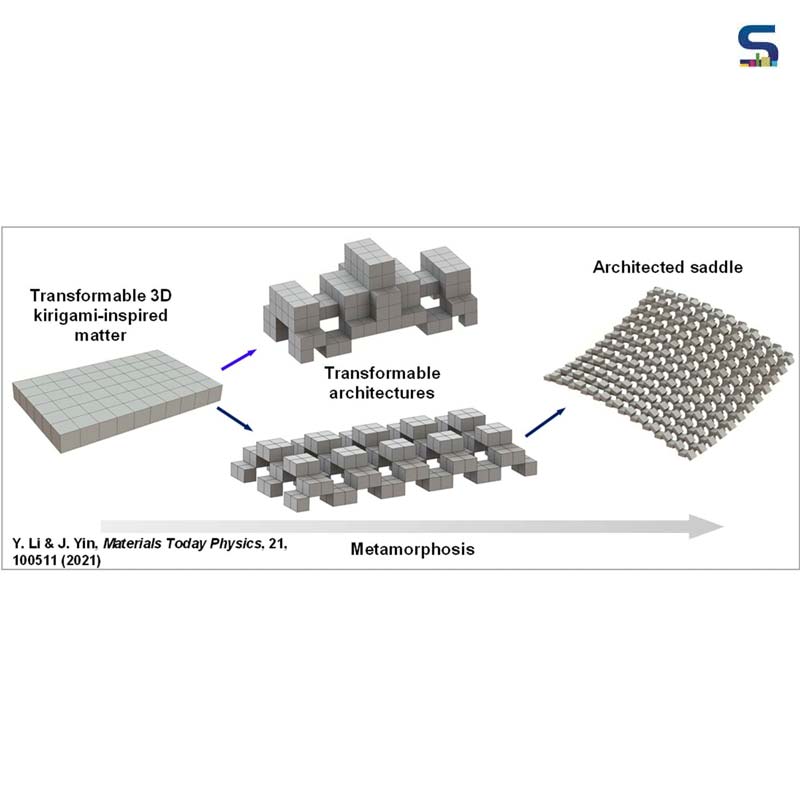
North Carolina State University researchers have reportedly developed a material that can be used to create structures that are capable of transforming into multiple architectures. Inspired by metamorphosis, the researchers envision applications ranging from construction to robotics.
Co-author of Metamorphosis of three-dimensional kirigami-inspired reconfigurable and reprogrammable architected matter paper and an associate professor of mechanical and aerospace engineering at NC State, Jie Yin informs, “With metamorphosis in nature, animals change their fundamental shape. We’ve created a class of materials that can be used to create structures that change their fundamental architecture.”
Based on kirigami concept
The fundamental concept of Yin’s work draws inspiration from kirigami – a variation of origami that involves cutting and folding paper. Kirigami uses 2D materials; however, Yin applied this concept of kirigami to 3D materials.
Published in the journal Materials Today Physics, he notifies that the metamorphosis system begins with a single unit of 3D kirigami. Thereon, each unit can form different shapes in itself. That said, these units are modular, which means that they can be connected to form increasingly complex structures as well. Since these single units can form multiple shapes and can connect to another unit in different ways, the overall system therefore has the ability to form a wide variety of architectures.
Earlier, Yin demonstrated a similar concept where 3D kirigami units are stacked on each other. These units could be used to amass a structure. However, once assembled, the structure could not be disassembled.
The metamorphosis system allows actual joining of these units. Once connected, these units cannot be disconnected. However, the larger structures they create are capable of transforming into multiple architectures.
The difference in the two methods
According to Yin, there are two big differences between the first kirigami system and the metamorphosis system. In the first kirigami system, the single units could be assembled into architectures and then later could also be disassembled. This acted as an advantage. However, once the units were assembled, the architecture was unable to transform as the sides of the unit were not rigid enough and fixed at a 90 degree angle; while the assembled structure could bend and move without fundamentally changing its geometry.
On the contrary, in the metamorphosis kirigami system, the structure cannot be disassembled just like in the first kirigami system as the sides of the unit are rigid and fixed at 90-degree angles. Also, the assembled structure does not bend or flex very much. However, unlike the first kirigami system, in the metamorphosis kirigami system, finished structure is capable of transforming into different architectures.
Tried and tested
The researchers have demonstrated that the metamorphosis system is capable of creating many different structures that are capable of bearing significant weight while maintaining their structural integrity. Yin believes that structural integrity is vital as construction is one potential application for the metamorphosis system.
Seeing its true potential, Yin adds, “If you scale this approach up, it could be the basis for a new generation of construction materials that can be used to create rapidly deployable structures. Think of the medical units that have had to be expanded on short notice during the pandemic, or the need for emergency housing shelters in the wake of a disaster.” He further stated that metamorphosis system could be also used to create a variety of robotic devices that can transform to respond to external stimuli or to perform different functions.